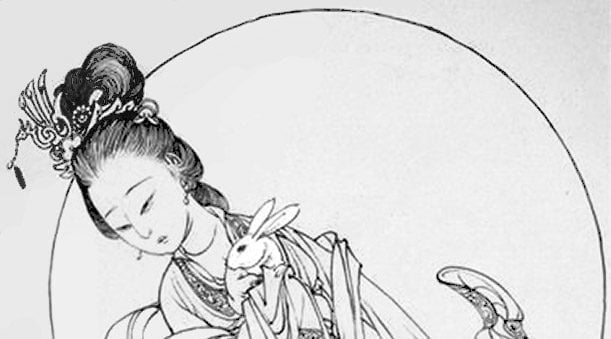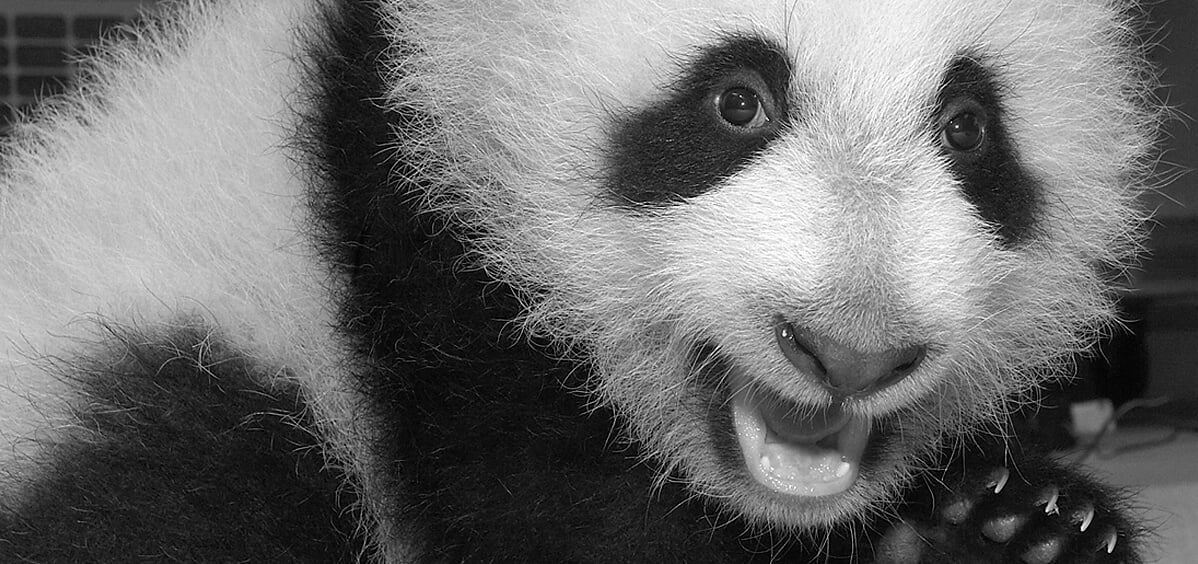Historically, the Mid Autumn Festival 中秋节 was a time to enjoy the successful reaping of rice and wheat with food offerings made in honor of the moon.
Also known as the Mid-Autumn Moon Festival, or simply the Moon cake Festival, it also celebrates the legends of ChangE 嫦娥, the Goddess of Immortality and her companion, the moon rabbit, called also 月兔 Yùtù or Jade Rabbit.
In this Article
The day is also known as the Moon Festival, as at that time of the year the moon is at its roundest and brightest. Morgen Mo from China culture tour writes:
There are many names for the Mid-Autumn Festival: In ancient times, there was an activity of autumnal equinox and eve (worshiping the moon), so it was called “Yuexi 月夕” or “Moon Festival 祭月节”. Because the festival is on August 15th, it is called “August Festival 八月节” and “August half 八月半”. As a symbol of reunion, it is also called the “Reunion Festival 团圆节”.
The Mid-Autumn Festival is a time when the moon is full, family reunions, and married daughters go home for a reunion, so it is also called the “Reunion Festival 团圆节” and “Daughter’s Day 女儿节”. In Guangfu area, the Mid-Autumn Festival is commonly known as the “Moonlight Festival 月光诞”.
It is also considered a harvest festival since fruit, vegetables and grain have been harvested by this time. In mid-autumn, all kinds of melons and fruits are ripe and on the market, so it is called the “Fruit Festival 果子节”. The Dong people call it the “Pumpkin Festival 南瓜节”, and the Mulao people call it the “Housheng Festival 后生节”.
The Mid-autumn Festival 中秋節 is celebrated on the fifteenth day of the 8th lunar month, close to the autumn equinox and dates back over 3.500 years. For people in China, Malaysia, Singapore, Indonesia, Philippines, Vietnam, Japan and Korea the Mid-Autumn Moon Festival, is still an occasion for outdoor reunions among friends and relatives to eat moon cakes and watch the moon, a symbol of harmony and unity.
And tell each other ancient stories of goddesses, superheroes, mythical plants and animals – Hou Yi 后羿 and Chang E 嫦娥 and the Moon Rabbit 玉兔 or Yùtù and moon tree.
Mid Autumn Festival mythology: Moon cakes 月饼, Hou Yi 后羿 and Chang E 嫦娥 and the Moon Rabbit 玉兔 – Yùtù
Myth and folklore of the Moon cakes 月饼
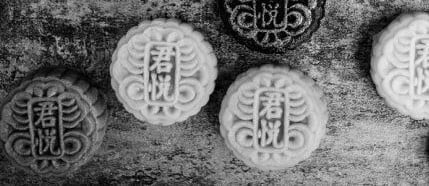
In September, we been lucky enough to try delicious Moon cakes, known as yue bing 月饼 in Georgetown, Malaysia 🥮.
They are baked with a surface imprinted with the name of the bakery as well as auspicious Chinese characters and symbols for “longevity” or “harmony.”
Moon cakes & Revolution – History and legend
The cultural history behind moon cakes goes into clandestinely and revolution, as they where used to pass messages that were either hidden within or embossed onto the cakes.
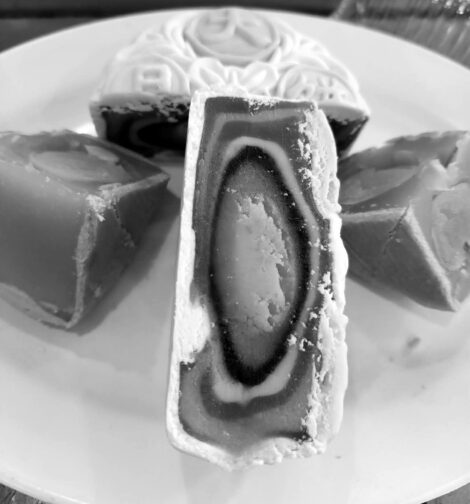
Legend has it that moon cakes were cunningly used by women to start a revolution against the hated Mongol rulers in the 14th century. They hid paper strips with secret messages inside the cakes, year after year during the Moon Festival, when sending moon cakes to neighbors, friends, and families, a procedure so traditional and universal that the Mongols never suspected what was happening.
~ Oxford Companion to Food. Alan Davidson. 2006.
Mid-Autumn festival rebellion
The Mongols had attempted to invade China many times in ancient times and eventually succeeded under the leadership of Kublai Khan during the 13th century. During the century that the Mongols were in power, their rule was oppressive, forbidding Chinese people to gather in public or own weapons, as well as levying heavy taxes, while making bad land management decisions that led to poor crops yield.
The story goes that Liu Bowen, the confidant of the rebel leader Zhu Yuanzhang, suggested that the rebellion be timed to coincide with the Mid-Autumn festival. Zhu applied for and got permission to distribute thousands of mooncakes to Chinese residents in the Mongol capital as a blessing to the longevity of the Mongol emperor. Inside each cake was a piece of paper saying,
“Kill the Mongols on the 15th day of the eighth month”.
The plan succeeded, since the Mongols did not eat mooncakes, and they were overthrown, retreating back into Mongolia, while Zhu founded the Ming Dynasty (1368-1644 AD).

Although some Chinese historians are skeptical that the cakes were used in this way, moon cakes have historically been made with specific molds and always include three to six Chinese characters imprinted into the top.
HISTORY: On the mooncake
The earliest mention of mooncakes dates to the Song Dynasty (AD 960–1279). The traditional Chinese pastry was notably mentioned in the Southern Song Dynasty Chronicle by Wu Zhimu 吴自牧.
Before this, though, the tradition of using baked cakes as an edible offering to lunar gods and goddesses long existed in the Middle Kingdom. In these earlier centuries, the pastry was referred to by other names such as yuè tuán 月团 and xiǎo bǐng 小饼.
During the reign of Tang Dynasty Emperor Xizong (AD 873–888), mooncakes were also gifted by the imperial court to visiting scholars during the Mid-Autumn Festival. This practice likely inspired the pastry’s association with the festival.
And while the practice of gifting mooncakes dates from the Tang Dynasty, the widespread practice of making and eating mooncakes during the Mid-Autumn Festival only began during the Ming Dynasty (AD 1368–1644).
With several centuries between the Tang and Ming dynasties, one can theorize that the pastry started as an aristocratic pleasure before being embraced by the people.
Moon appreciation activities in the Ming and Qing dynasties continued to prevail.
“The sacrificial fruit cake must be round”
– each family must set up a “moon light position” and “worship to the moon” in the direction of the moon rise.
Fu Cha Dunchong in “Yenjing Sui Shi Ji” stated:
“Mid-autumn moon cakes, formerly known as the Meizhai, are the first in Kyoto. Moon cakes are available everywhere.
The older ones are more than a square foot, and they are painted on the moon palace wax. In the shape of a rabbit.”
Eating Moon cakes 吃月饼 with many flavors
In the Northern Song Dynasty, August 15 was officially designated as the Mid-Autumn Festival, and there was a seasonal food of
“small cakes like chewing the moon, with crisp and sweet meat”.

The fillings for the Cantonese version are traditionally of red bean, lotus paste or assorted nut with a medley of almonds, melon seeds, walnuts and dried winter melon.
Also Osmanthus, Prunes, Rose, Rock sugar and Ginkgoes are used.
Salty sweet and Spicy fillings are prepared with dried meat floss, Black sesames, Ham and Yolks.
In China, traditional moon cakes are classified into many types depending on the origin and features, they are very different in terms of materials, cooking methods, appearances and flavors. Here are a few popular types:
- Cantonese-style,
- Beijing-style,
- Suzhou-style, and
- Chaoshan-style.
Apart from these, many other regional variations exist, some of which taste and look completely different. There are moon cakes made from fruits and vegetables, coconut milk, different meats, seafood, mustard, miscellaneous grains, and even ice cream.
There is healthy moon cakes containing nutrients such as ginseng, calcium, and Chinese herbs. Pictographic moon cakes and mini moon cakes are available, as well as French moon cakes and Japanese moon cake variations.
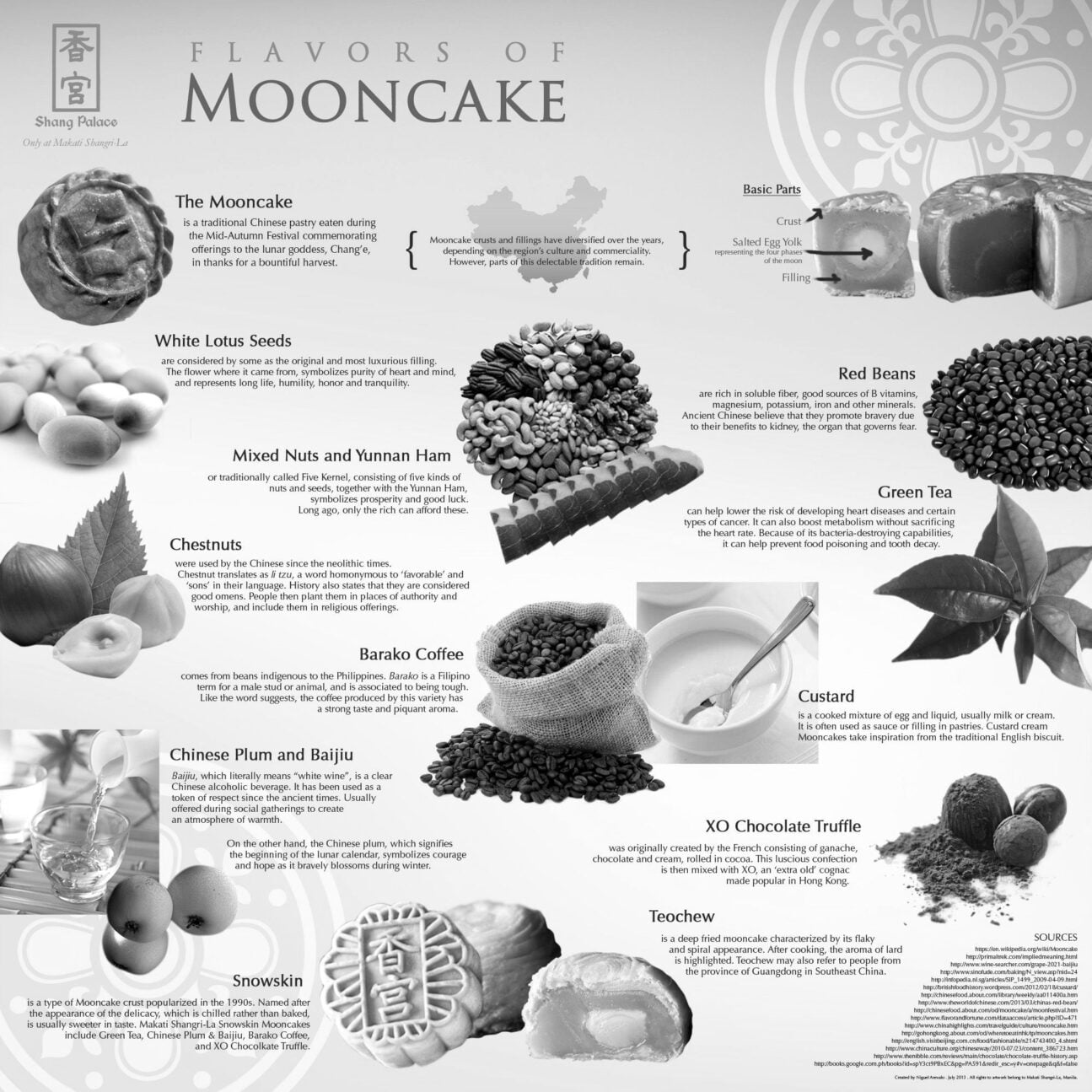
Wuren Mooncake – Mixed Nuts Moon cake 五仁月饼 wǔ rén yuè bǐng
Wuren literally means five kinds of nuts or kernels such as walnut kernels, almonds, sesame seeds, melon seeds, hawthorn, red beans and so on.
Red Bean Mooncake 豆沙月饼 dòu shā yuè bǐng
Sweet red bean moon cake is smooth and has a rich flavor, which makes it a most popular moon cake flavor.
White Lotus Mooncake 莲蓉月饼 lián róng yuè bǐng
The lotus mooncake is a Cantonese-style moon cake. The filling is white lotus paste, which is made of the fresh lotus seeds.
Salted Egg Yolk Mooncake 蛋黄月饼 dàn huáng yuè bǐng
As it implied in the name, the filling of this kind of moon cake is the solid salted egg yolk.
Snow Skin Mooncake 冰皮月饼 bīng pí yuè bǐng
It is a new moon cake flavor, the cake skin is crystal clear made of glutinous rice flour. Different from other moon cakes, it needs to be stored in the refrigerator.
Minced Pork Mooncake 鲜肉月饼 xiān ròu yuè bǐng
It is a traditional snack in Jiangsu, Zhejiang and Shanghai regions. The filling is fresh minced pork. The outer dough is permeated by meat juice and baked, which makes it crisp and special in taste.
Green Tea Mooncake 茶叶月饼 chá yè yuè bǐng
Green tea powder is added into the dough or the fillings. It is not overly sweet and has a fresh taste.
Fruit Mooncake 水果月饼 shuǐ guǒ yuè bǐng
The sweet but not greasy taste comes from the fillings. Usually fresh fruits like strawberry, orange, peach, and pineapple are added. The durian moon cake is the popular fruit moon cake flavor in recent years.
Flower Cake 鲜花饼 xiān huā bǐng
Flowers are added to the filling , bringing a fragrant taste. The variety is quite rich and the most popular ones are rose and sweet-scented osmanthus.
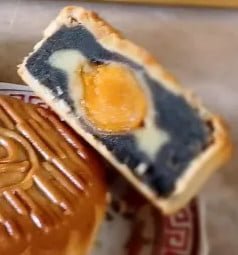
Yam Mooncake 芋泥月饼 yù ní yuè bǐng
The classic Chaoshan or Teochew holds a single egg yolk as it symbolizes the moon. When a moon cake is bisected, the visual of a golden yellow yolk against a dark paste filling is quite dramatic, like a full moon mounted against the vast night sky.
Legend has it, that the moon goddess ChangE’s favorite food are moon cakes with fruits.
Myth and folklore of Hou Yi 后羿 and Chang E 嫦娥
The Moon festival is intimately linked to the legends of Chang’e 嫦娥 or Hêng Ô 后羿, the Goddess of the moon and immortality, spelled Chang-o here.
“On a gold throne, whose radiating brightness
Dazzles the eyes – haloing the scene,
Sits a fair form, arrayed in snowy whiteness.
She is Chang-o, the beauteous Fairy Queen.
Rainbow-winged angels softly hover o’er her,
Forming a canopy above the throne;
A host of fairy beings stand before her,
Each robed in light, and girt with meteor zone.”
Dennys’ Folk-Lore of China
Lady Chang É Flying to the Moon (嫦娥奔月, Chang E Ben Yue)
The legend of Chang’e flying to the moon is known as Chang’e Benyue 嫦娥奔月, and there are several versions. The most popular version states that Chang’e and the archer Houyi were once immortals, a married couple living in heaven.
后羿射日 Hou Yi Shoots the Sun

One day, the ten suns, three-legged crows, in heaven caused the Earth to scorch and all the plants to die.
The Jade Emperor summoned Houyi to stop the three-legged crows from ruining Earth, so Houyi shot down nine of the suns, leaving just one to be the sun.
To punish Houyi for killing nine of his sons, the Jade Emperor banished Houyi and Chang’e to live as mortals on Earth. Chang’e was incredibly upset at losing her immortality so Houyi went on a long quest to find the Pill of Immortality or Elixir of Immortality.
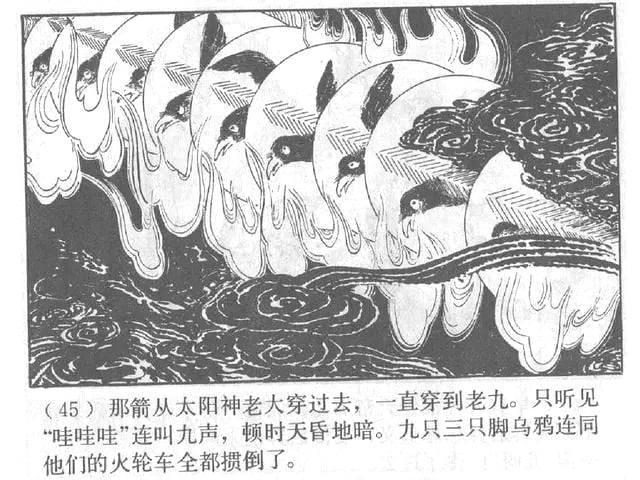
– Alternate version of the myth Lady Chang E flying to the moon
H ouyi was very much in love with his wife Chang E. Seeing that she was miserable as a mortal, Houyi set out to find a way back to the Heavens and to immortality. Travelling far to Kunlun Mountain, Houyi visited Xiwangmu 西王母,the Queen Mother of the West, who gave him a vial of elixir to share with his wife.
The vial contained enough elixir for both Houyi and his wife to become immortal but was the last of its kind, and the Queen warned Houyi that it must be shared between the archer and his wife as it was the last elixir for thousands of years. On his return home, Houyi was obliged to pay his respects to the emperor of earth, but first he went straight home to give the vial to his wife for safekeeping.
However, one of Hou Yi’s students, Pang Meng or Feng Meng (逢蒙 féng méng), wanted the elixir for himself so when Hou Yi was out hunting one day, he tried to take it from Chang E.
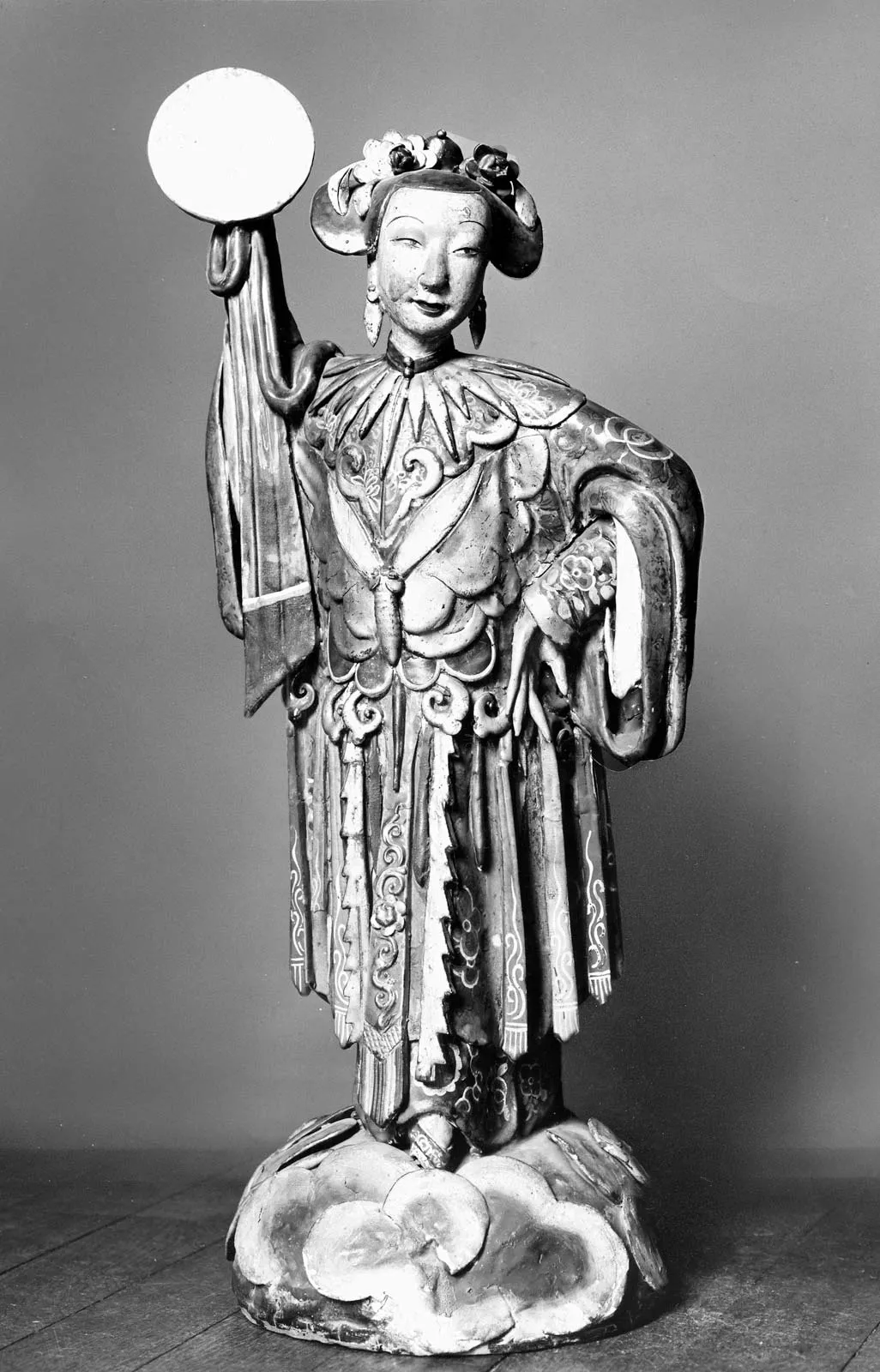
Realizing Feng Meng’s intentions, Chang E quickly drank the elixir and began to rise to the Heavens. Not wanting to leave Hou Yi, she floated to the Moon – the closest place in Heaven to the earth – so that she could remain close to her beloved husband.
She would live in the moon palace and would be called moon goddess Chang E from now on.
This is, for many, the official story behind the celebrations for the Mid-Autumn Festival:
Moon Goddess Chang’e 嫦娥
After Chang E floated away, Hou Yi missed her intensely. He would often be found looking up to the moon (where it is said if you look close enough you can still see Chang E,) with teary eyes. And on each full moon he would place plates of her favorite foods, like moon cakes, out on tables for her.
As time went on, other locals starting placing offerings on tables and prayed to Chang E, the Lunar Deity, for good luck and protection.
In this version of the story, Chang’e consumes the elixir to prevent Houyi’s evil apprentice Feng Meng 逢蒙 from getting hold of it, while in another version, she finds the pill out of curiosity and consumes it by accident.
In all versions of the legend, Chang’e becomes immortal and flies to the moon, where she has the company of a jade rabbit and a wood cutter.
Moon Goddess Chang’e 嫦娥 and Houyi are separated forever, although some retellings claim that during the Mid-Autumn festival, Houyi can cross the milky way and get closer to Chang’e as the distance between them is lessened by the new moon.
The tradition of holding lanterns is thought to be people on Earth holding and waving the lanterns near where Houyi is crossing the milky way, so that Chang’e knows where to look for her beloved Houyi.
Variations on the legend of the moon goddess
Chang’e accidentally swallows the elixir of Immortality
According to legend, Chang’e and her husband Houyi were immortals living in heaven. One day, the ten sons of the Jade Emperor transformed into ten suns, causing the earth to scorch. Having failed to order his sons to stop ruining the earth, the Jade Emperor summoned Houyi for help.
Houyi, using his legendary archery skills, shot down nine of the sons, but spared one son to be the sun. The Jade Emperor was obviously not pleased with Houyi’s solution to save the earth: nine of his sons were dead. As punishment, the Jade Emperor banished Houyi and Chang’e to live as mere mortals on earth.
Seeing that Chang’e felt extremely miserable over her loss of immortality, Houyi decided to journey on a long, perilous quest to find the elixir of Immortality so that the couple could be immortals again. At the end of his quest he met the Queen Mother of the West who agreed to give him the elixir, but warned him that each person would only need half the elixir to become immortal.
Houyi brought the elixir home and stored it in a case. He warned Chang’e not to open the case and then left home for a while. Chang’e became too curious: she opened up the case and found the elixir just as Houyi was returning home.
Nervous that Houyi would catch her discovering the contents of the case, she accidentally swallowed the entire elixir. She started to float into the sky because of the overdose. Although Houyi wanted to shoot her in order to prevent her from floating further, he could not bear to aim the arrow at her. Chang’e kept on floating until she landed on the Moon.
Chang’e accidentally swallows the elixir of Immortality

Chang’e was a human in the mortal world. She was a palace maid. Suddenly, 10 suns appeared in the sky and the earth became very hot. The king looked for a person with accurate archery skills to shoot down nine of the suns.
A commoner called Hou Yi saw that the situation was getting bad. He took out his arrow and bow and shot down the nine suns with nine arrows.
The King was pleased and wanted to reward him. Hou Yi was in love with Chang’e and wanted to marry her. The king gave her to him as a reward.
The two lived happily until one day, a mysterious old man came and gave Hou Yi an elixir that could make him live forever. Hou Yi hesitated whether to take the pill. He was unsure and left the pill under his pillow on the bed. Chang’e found the pill. She did not know what it was and just swallowed it. Chang’e became immortal and flew to the moon. Hou Yi was devastated and died.
While she became lonely on the Moon without her husband, she did have company. A jade rabbit, who manufactured elixirs, also lived on the Moon. The mythologies of Japan and Korea also feature references about the moon rabbit living on the Moon.
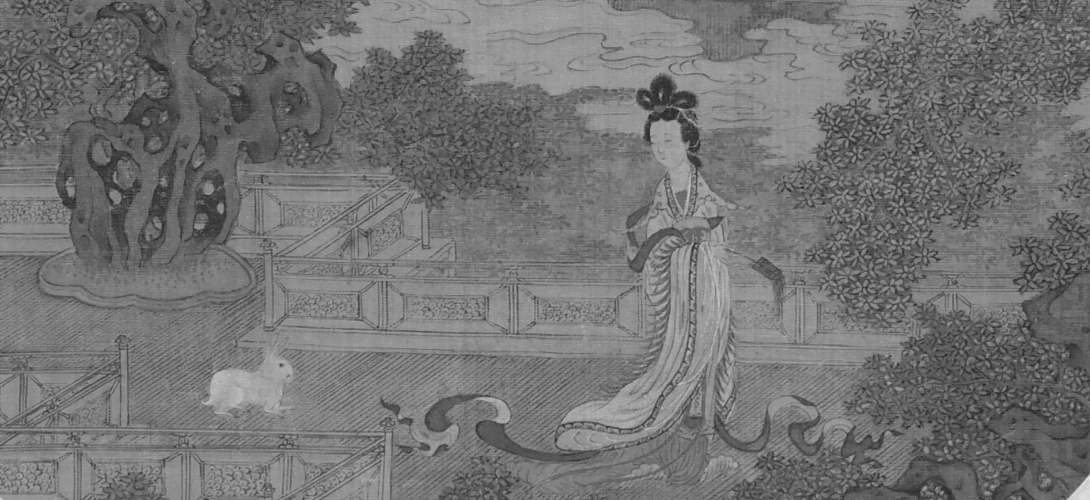
Hou Yi becomes a tyrant so Chang E takes the elixir to ensure his reign would come to an end
Chang’e was a beautiful young girl working in the Jade Emperor’s palace in heaven, where immortals, good people and fairies lived. One day, she accidentally broke a precious porcelain jar. Angered, the Jade Emperor banished her to live on earth, where ordinary people lived. She could return to the Heaven, if she contributed a valuable service on earth.
Chang’e was transformed into a member of a rich farming family. When she was 18, a young hunter named Houyi from another village spotted her, now a beautiful young woman. They became friends.
One day, a strange phenomenon occurred – 10 suns arose in the sky instead of one, blazing the earth. Houyi, an expert archer, stepped forward to try to save the earth. He successfully shot down nine of the suns, becoming a hero. He eventually became king and married Chang’e.
But Houyi grew to become a greedy and selfish king. He sought immortality by ordering an elixir be created to prolong his life. The elixir in the form of a single pill was almost ready when Chang’e came upon it. She either accidentally or purposely swallowed the pill.
This angered King Houyi, who went after his wife. Trying to flee, she jumped out the window of a chamber at the top of the palace – and, instead of falling, she floated into the sky toward the Moon. King Houyi tried unsuccessfully to shoot her down with arrows.
Chang E took the elixir through an act of pure selfishness:
Chang E had been so miserable after losing her immortality that she could not control her curiosity and opened the bottle. Raising it to her lips she considered what would happen if she took the elixir all for herself. Chang E decided to summon a fortune-teller. Reassured that she should take the elixir for herself.
Houyi returned home to find his wife floating out the window and up into the sky. Seeing the empty vial, Houyi was angry and heartbroken at her betrayal and raising his bow to the sky aimed to shoot her down. But he could not bring himself to do so.
Chang E floated all the way up to the moon where she settled to live. She missed her husband terribly.
Left alone on earth Houyi was later honoured for his bravery and protection and welcomed back to the Heavens. In this tale Houyi built himself a palace on the sun as Yang (the male principle), while Chang E is Yin (the female principle).
Once a year, on the 15th day of the full moon, Houyi is able to visit his wife and on this night the moon is especially full and beautiful.
In other versions Chang E took it to maintain her youth, she took it because Hou Yi was unfaithful to her, and there is even a version where Hou Yi s dog goes after Chang E.
Chang E 嫦娥 and Hou Yi’s hunting hound
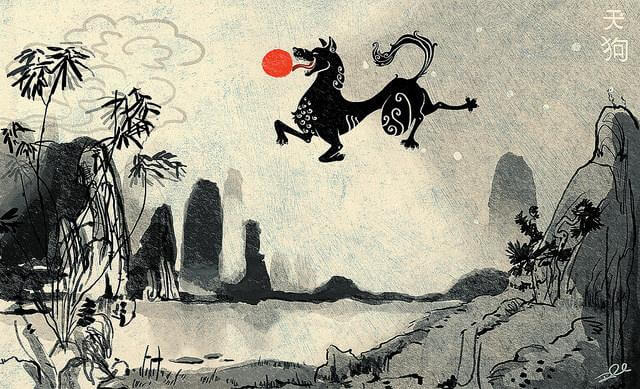
Tiangou 天狗 the Heavenly Dog, is a black dog that eats the moon or the sun. According to legends, as an interpretation of a lunar or solar eclipse.
Closely related to this story is the legend that when Chang E stole the immortal pills rewarded to her husband Hou Yi for shooting down the nine suns – , Hou Yi’s hunting hound chased her all through her ascent up to the sky.
Hearing its bark, Chang E hid herself in the Moon. Meanwhile, all the hair on the hound’s body stood up erect and its body kept on expanding. Then in one motion, it leaped up and swallowed the Moon along with Chang E.
When the Heavenly King and Queen heard about this event, they sent the Heavenly Guards to apprehend the black dog. When it was brought forth, the Heavenly Queen recognized it as Hou Yi’s hunting hound and gave it the title of Heavenly Dog and the responsibility of guarding the Southern Heavenly Door.
As a result of the honor given to it, the hound spat out Chang E and the Moon. Thereafter, Change E made the Moon her home.
Chang E transforms into Chang-chu 蟾蜍 – the three- legged toad
The famous astronomer Chang Hêng was avowedly a disciple of Indian teachers. The statement given by Chang Hêng is to the effect that
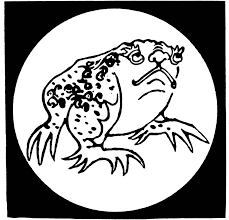
How I, the fabled inventor of arrows in the days of Yao and Shun,[a legendary chieftain, who flourished about 2,500 B.C.] obtained the drug of immortality from Si Wang Mu (the Royal Mother of the West); and Chang Ngo (his wife) having stolen it, fled to the moon, and became the toad – Chang-chu 蟾蜍 – which is seen there.
Lady Chang-ngo is still pointed out among the shadows in the surface of the Moon. Tells us Dennys in Folk-Lore of China.
Dr. Wells Williams also informs us, that in China “the sun is symbolized by the figure of a raven in a circle, and the moon by a rabbit on his hind legs pounding rice in a mortar, or by a three-legged toad.
The last refers to the legend of an ancient beauty, Chang-ngo, who drank the liquor of immortality, and straightway ascended to the moon, where she was transformed into a toad, still to be traced in its face. It is a special object of worship in autumn, and moon cakes dedicated to it are sold at this season.”
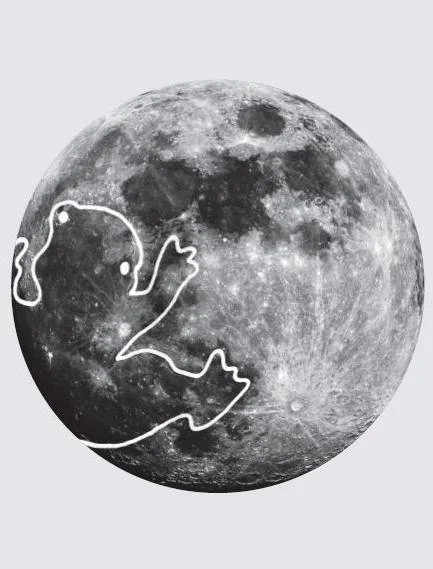
In Chinese mythology, the Three-Legged Toad is said to only exist in the moon which it swallows during a lunar eclipse. Since this Three-Legged Toad is so remote, it symbolizes also the “unattainable”.
The Middle Kingdom, by S. Wells Williams, 1839
In Chinese mythology and yin yang theory, the three-legged toad is a Moon symbol and the three-legged crow is a Sun symbol.
Joseph Needham and Lu Gwei-djen say the three legged toad and the drug-pounding Moon rabbit both symbolize the Moon and therefore the Yin force, which was vital for making waidan alchemical elixirs.
Some ancient Daoists valued toad flesh “as an aid to longevity and immortality”, and which could cause a person to escape invisibly from captivity.
Wu Gang cutting the osmanthus tree 吴刚伐桂
On the moon ChangE has the woodcutter Wu Gang 吴刚 as a companion. The woodcutter offended the gods in his attempt to achieve immortality and was therefore banished to the Moon.
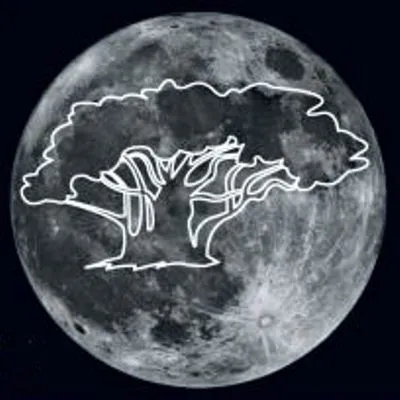
The Jade Emperor planted an osmanthus flower tree on the moon (some say it was a cherry bay tree…)
Wu Gang was allowed to leave the Moon if he could cut down the osmanthus tree that grew there.
Each time he chopped on the tree, the tree would instantly grow back, effectively condemning him to live on the Moon for eternity.
Chinese people use this image of the tree to explain mortal life on earth—the limbs are constantly being cut away by death, but new buds continually appear.
On a lunar tree and a woodcutter
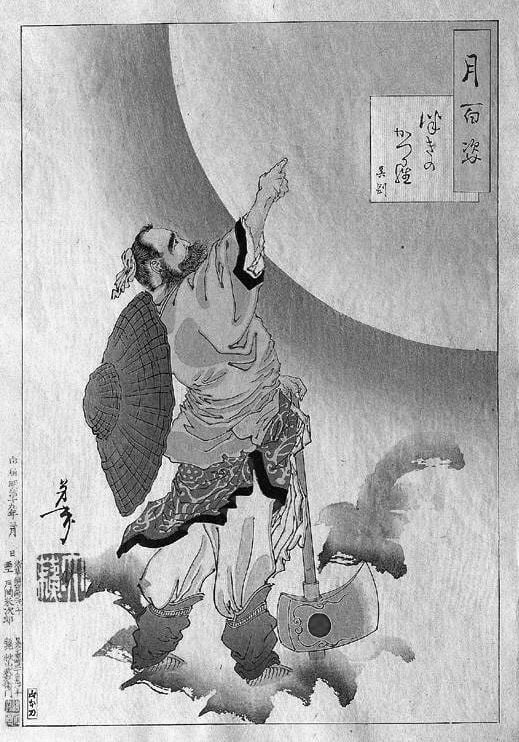
The 9th-century Miscellaneous Morsels from Youyang mentions a lunar tree over five hundred zhang high. A certain Wu Gang of Xihe stands under it, constantly chopping at the tree, which grows back after it is chopped.
Wu murdered his wife’s lover
Wu witnessed a liaison between his wife and Yandi’s grandson, after the two had already carried on an affair so long it begat three sons. In a rage, Wu murdered his wife’s lover but Yandi ordered Wu banished to the Moon, where he would cut down a tree. After each blow, the tree healed itself and Wu was therefore forced to cut at it forever.
Wu the man in the moon
In yet another version, Wu found a teacher in the mountains in his quest for immortality. When his teacher taught him to heal, he gave up after three days.
When he was taught to play Chinese chess, he gave up after two days.
When he was taught the method of eternal life, he gave up after a day. His teacher then sent him to the Moon to chop down the tree.
In Chinese sources the tree is given the name guì 桂, which originally referred to both the sweet osmanthus and the cassia 肉桂, “meat guì” tree. The shadows on the Moon are said to be created by the growing tree.
The idiom of Wu Gang Cutting the Osmanthus Tree is often used to describe an endless task – like the story of Sisyphus rolling a boulder up a hill in Greek mythology.
In another version of this myth, the self-healing tree is said to require being cut back by Wu Gang, every 1000 years or its luxuriant growth will overshadow the moon (which explains the waxing and waning of the moon). This continual chopping was a punishment for murdering his wife for having an affair. After each chop, the tree would repair itself and he would be forced to cut it forever.
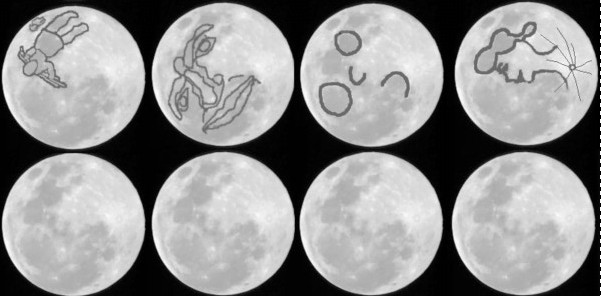
Can you see the man in the moon?
Different patterns identified in the appearance of the Near side of the Moon.
They show the Man in the Moon – Wu Gang 吴刚 –, based on pareidolic interpretations.
Ethnobotany: The Osmanthus Gui Hua Gao 桂花糕
Osmanthus gets its name from the Greek words osma, meaning “fragrant”, and anthos, meaning “flower”.
Osmanthus, Gui Hua or Osmanthus fragrans is a species containing over 30 different varieties from Asia. The leaves are used to perfume tea and the tree’s fruit are edible. It is the flowers that are most frequently used medicinally.

For some people, the mid-autumn festival is an opportunity for healing.
In Traditional Chinese Medicine (TCM), if your body has deficient Yin energy (red eyes, fast pulse, dry skin, cough, constipation, restless sleep, anger, and anxiety) you can balance your energy during the mid-autumn festival using the moonlight and the osmanthus. It can treat “Yin” deficiencies like kidney problems, endocrine problems or liver problems.
Osmanthus petals are a well- known herb in Traditional Chinese Medicine (TCM), that can improve skin, detoxify the body, reduce thick saliva in the throat and boost lung health. Osmanthus tea is often consumed when one suffers from a dry skin or hoarseness.
In western Medicine it is used to cure: Stomach cramping, menstrual cramps, insomnia, sunburn, acne, sluggish digestion, gas, cancer, stress, anxiety and poor appetite.
Beyond its medical applications in Chinese medicine, osmanthus is also used to make a valuable perfume. The scent has often been compared to jasmine, to honey, or to apricot. It also has slightly woody or earthy undertones, which make it especially nicely with the faintly herbal earthiness of tea.
Its other names are Sweet Olive, Tea Olive and Fragrant Olive. It was considered so precious in ancient times that it was only used to make perfumes for the Emperor.
The flowers are harvested in the autumn around the moon festival season. Osmanthus wine is a traditional choice for the “reunion wine” drunk with one’s family, and osmanthus-flavored confections and teas may also be consumed.
The flowers are also used to produce osmanthus-scented jam, osmanthus cakes, dumplings, soups, and osmanthus liquor.
Osmanthus flowers have long symbolized love, faithfulness, and fertility. In Chinese culture, the flowers are used in weddings or given as a gift from a bride to her new family, representing peace.
The cultural history of the osmanthus tree also describes the color of the moon, painted, as the soft yellow color of osmanthus blossoms. The flowers can range from white to light yellow, to a bright yellow and a deep orange.
The phrase “breaking the osmanthus twig and mounting the dragon” is an old euphemism for the act of love between woman and man.
The mythological status as the Tree of the Immortals is linked with the moon and the Mid Autumn festival. Grandmothers sit in courtyards with young children eating moon cakes and telling stories about the tree, the moon, and the mythical beings who live upon its surface. Chang E, Wu Gang, the tree and a rabbit.
Myth and folklore of the moon rabbit
The Moon rabbit, Moon hare or Jade rabbit – 玉兔 Yùtù is a mythical animal that lives on the moon, based on pareidolic interpretations that identify the dark markings on the near side of the Moon as a rabbit or hare.
If you look up at the full moon and squint slightly at the markings, you can still see the Jade Rabbit.
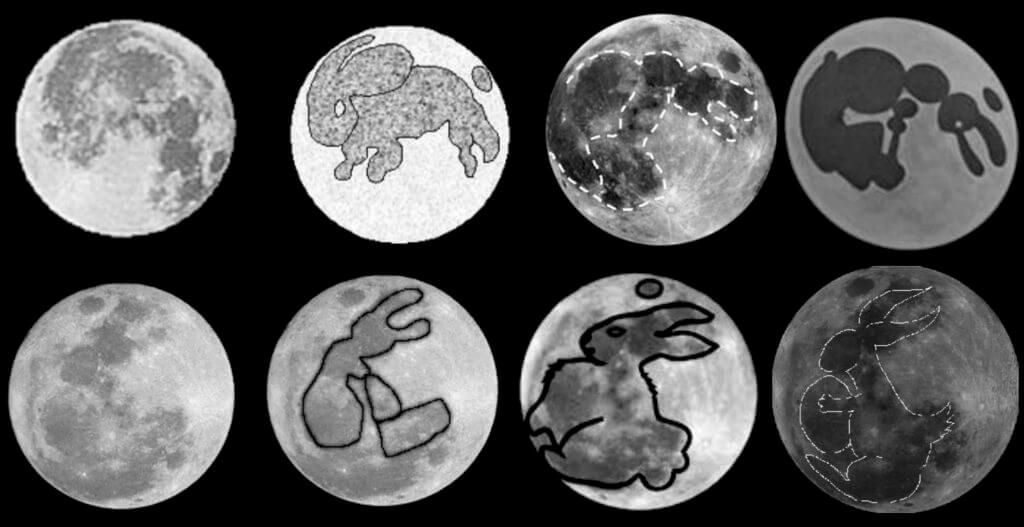
In Chinese folklore, the hare is often portrayed as a companion of the Moon goddess Chang’e, 嫦娥, the Goddess of Immortality, constantly pounding the elixir of life or immortality for her. In other Chinese versions the rabbit pounds medicine for all the immortals.
In other versions, the rabbit, does not create elixir of life. For Japanese and Koreans , the Jade rabbit is pounding the ingredients for rice cake.
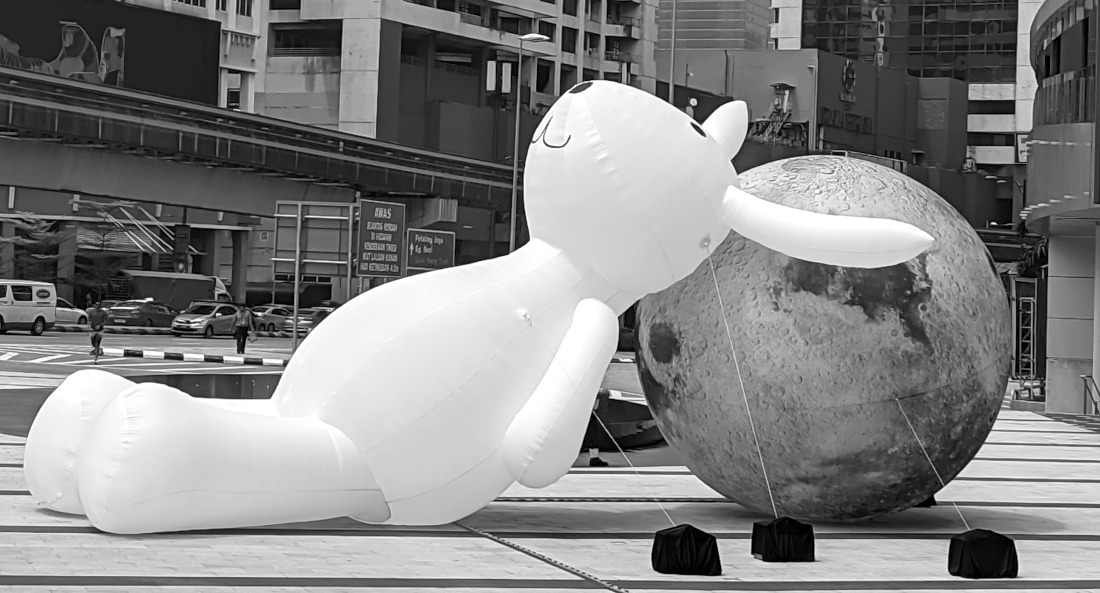
On the creation of the Moon hare
In the following Version, Hêng Ô flies to the moon and vomits the Jade rabbit. This story comes from Myths and Legends of China, by E. T. C. Werner. 1922.
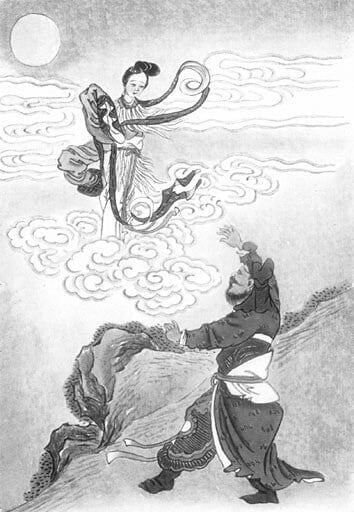
Hêng Ô, during her husband’s absence, saw a white light which seemed to issue from a beam in the roof, while a most delicious odour filled every room. By the aid of a ladder she reached up to the spot whence the light came, found the pill of immortality, and ate it.
She suddenly felt that she was freed from the laws of gravity and as if she had wings, and was just essaying her first flight when Shên I returned. He went to look for his pill, and, not finding it, asked Hêng Ô what had happened.
The young wife, seized with fear, opened the window and flew out. Shên I took his bow and pursued her. The moon was full, the night clear, and he saw his wife flying rapidly in front of him, only about the size of a toad. Just when he was redoubling his pace to catch her up a blast of wind struck him to the ground like a dead leaf.
Hêng Ô continued her flight until she reached a luminous sphere, shining like glass, of enormous size, and very cold. The only vegetation consisted of cinnamon-trees.
No living being was to be seen. All of a sudden she began to cough, and spat out part of the pill of immortality, which was transformed into a rabbit as white as the purest jade.
Hêng Ô noticed a bitter taste in her mouth, drank some dew, and, feeling hungry, ate some cinnamon. She took up her abode in this place.
How the Jade Rabbit 玉兔 – Yùtù got to the moon
“…the moon and the hare occur together in myth and folklore – in India, China, Africa, Mexico, North America and Europe…”
George Ewart Evans. David Thomson
O ne day, the Jade Emperor decided that he wanted some help preparing the elixir of life for the immortals. Fearing that humans would be too selfish and untrustworthy for such an important role, he thought an animal would be better suited to this responsibility.
The Jade Emperor came down the Earth disguised as a beggar and went to search for a worthy animal in a forest. As a famished and frail man, he cried out for help and food and eventually three animals came to see if they could help; the monkey, the fox, and the rabbit.
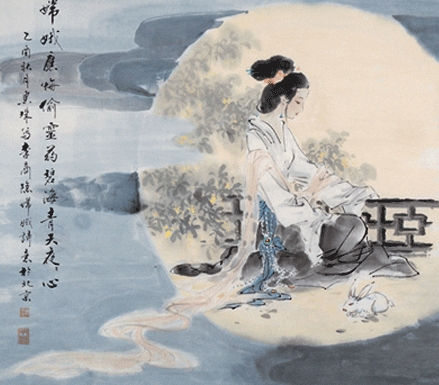
The monkey, the fox and the rabbit were sympathetic to the old beggar’s plight and went into the forest to search for food. The monkey returned laden with fruits he had gathered from up in the trees. The fox returned with some fish he had caught in a nearby stream.
Despite searching throughout the forest, the rabbit could not find any food for the old man from the woodland floor. When the rabbit returned much later, and saw the beggar sat next to the fire eating the fruits and the fish, the rabbit felt sad that he had not been able to find him any food. Realizing that he could sacrifice himself so that the man
could eat, the rabbit threw himself into the fire in an ultimate act of selflessness.
But at that instant the beggar turned back into the Jade emperor and stopped the rabbit from being burned. Having found the most noble of creatures to take on the role of creating the elixirs, the Jade Emperor carried him up to the moon, where he learned to make divine medicines and be kept safe from humans wishing to steal the elixir of life.
The rabbit worked hard and learned to create the divine medicines, eventually mastering the skills required to pound the right ingredients together to create the elixir of life. The Jade Emperor was so delighted with the rabbit that he made the rabbit’s fur a dazzling white.
The heavenly glow from the rabbit’s smooth and bright fur was so bright and beautiful, that it looked like precious jade, which is why the other heavenly beings came to call him the Jade Rabbit.
Han Dynasty poets call the rabbit on the Moon the Jade rabbit 玉兔 or the Gold rabbit 金兔, and these phrases were used often, in place of the word for the Moon.
– Alternate version: How the Jade Rabbit got to the moon

O nce upon a time, there were three animals living in a forest: a fox, a rabbit, and a monkey.
Three immortals, pretending to be beggars, went through the forest asking for food. The fox and the monkey quickly offered them food.
The rabbit, who was less resourceful but very pious, felt guilty. She said, “I’m so sorry I couldn’t offer any food to help you, but I can give myself,” and jumped into the fire.
The three immortals were moved by the rabbit’s sacrifice, and decided to make the rabbit an immortal, sending it to live in the Moon Palace with Chang’e.
Buddhist tale: How the Jade Rabbit got to the moon
A ccording to the Buddhist Jataka tales, a monkey, an otter, a jackal, and a rabbit resolved to practice charity on the day of the full moon, believing a demonstration of great virtue would earn a great reward.
When an old man begged for food, the monkey gathered fruits from the trees and the otter collected fish, while the jackal wrongfully pilfered a lizard and a pot of milk-curd.
The rabbit, who knew only how to gather grass, instead offered its own body, throwing itself into a fire the man had built. The rabbit, however, was not burnt.
The old man revealed himself to be Śakra and, touched by the rabbit’s virtue, drew the likeness of the rabbit on the Moon for all to see. It is said the lunar image is still draped in the smoke that rose when the rabbit cast itself into the fire.
History and customs of the Mid-Autumn festival
The Mid-Autumn Festival celebrations date back more than 2,000 years. The word “Mid-Autumn” first appeared in the famous ancient book Zhou Li (The Zhou Rituals).
As early as the Wei Jin Yuefu “Midnight Forty Songs”, there was a song “Autumn with Moon” that described:
“Look up at the bright moon, and send love to thousands of miles of light.”
However, it was not until the early Tang Dynasty (618-907) that the day was officially celebrated as a traditional festival. It became an established festival during the Song Dynasty (960-1279), and has become as popular as the Spring Festival since the Ming and Qing dynasties (1368-1911).
Celebrations have continued ever since and more customs for marking this occasion have been formed.
In feudal times, Chinese emperors prayed to Heaven for a prosperous year.
They chose the morning of the 15th day of the second lunar month to worship the sun and the night of the 15th day of the eighth lunar month to hold a ceremony in praise of the moon.
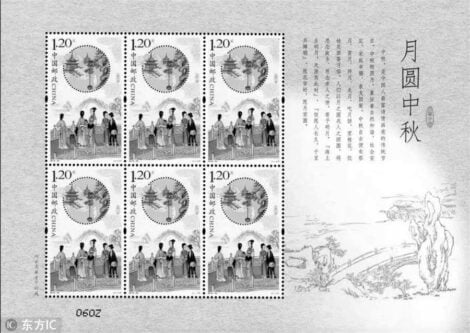
In the Xicheng district of Beijing is the Yuetan Park, which originally was the Temple of Moon, and every year the emperor would go there to offer a sacrifice to the moon.
The Chinese government listed the festival as intangible cultural heritage in 2006. It was made a public holiday in 2008.
Customs of the moon celebration
Mid- Autumn Festival Lanterns, love and marriages
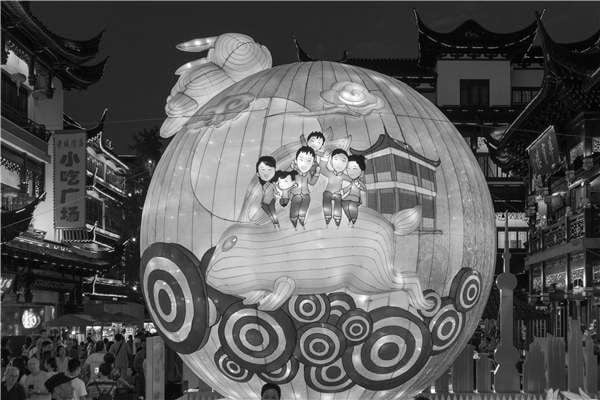
On the full moon the night of the Mid-Autumn Festival, many lanterns are hung in public places, and people gather together to guess the riddles 猜灯谜 written on the lanterns.
Because it is an activity that most young men and women do together, and there are love stories told on the lanterns, so guessing lantern riddles on Mid-Autumn Festival has also been derived as a form of love between men and women.
People use lanterns to light up earth so that Chang’e can bless them.
Yue Lao and the Destiny of Marriage – Old man under the moon 月下老人
The old man under the moon, 月下老人, commonly known as Yue Lao,月老, is a Chinese deity in charge of marriage between man and woman. Legend of Yue Lao, Old Man under the Moon The earliest account of Yue Lao is a story set during the Tang Dynasty.
It tells about a young man Wei Gus’ 韦固 unsuccessful attempts to find a wife. On another failed marriage prospect trip to a city called Song 宋城, he saw an old man reading under the moon. Curious, about his book, Wei Gu inquired from the old man who informed him it was the book of marriages and that his duty is to tie a red threat between a couple to make them husband and wife.
Desperate to find a wife, he asked if the old man could show him his future wife. Wei Gus’ was shown an old woman carrying a three- year old child, both seem to live in poverty. The three year old child was his future wife. Incensed, he ordered his servant to murder the child. Fortunately, the servant only managed to injure the child.

Years later, a high official offered his daughter in marriage to Wei Gu who happily accepted, pleased that he finally found a wife. On the wedding night, he noticed a scar between her eye brows and enquired about it.
His new wife told him about an incident where she was stabbed by a man in the City of Song. Wei Gu realized his wife was that little girl whom he tried to kill.
– Alternate versions of the myth of Yue Lao
Over the centuries, the story of Yue Lao and Wei Gu took many forms. In some stories, the young woman wore a headband to cover a scar between her eyes from a rock that was thrown from Wei Gu. In others, the young woman’s scar is created by assassins hired by Wei Gu to disprove Yue Lao’s prophecy. In some versions, Wei Gu begs his wife for forgiveness. In others, he begs Yue Lao.
Worship of Yue Lao

His birthday is celebrated on the 15th day of the eight lunar month, the same as the Mid Autumn Festival.
This story spread and soon people began praying to that old man for help in marriage concerns. As no one knew his name, he was referred to as the Old Man under the moon, Yue Lao or Yue Lao Deity. 月下老人, 月老, 月老神君 In the traditional Chinese marriage custom, the bride and bridegroom walks together holding a length of red cloth with a ribbon in the middle.
This might be a symbolism of their match by Yue Lao.
There are many temples and shrines establish for the worship of Yue Lao. Yue Lao is seen as an elderly man holding the book of marriage 姻缘簿 – In his left hand and a walking stick in his right hand. Sometimes, the red threads can be seen along with clay dolls symbolizing the couple.
Yue-lao, is reputed to hold the power of predestining the marriages of mortals — to tie together the future husband and wife with an invisible silken cord, which never parts so long as life exists.
Moon lore
Family traditions of the moon celebration
It is an evening celebration where families gather together to light lanterns, eat moon cakes and appreciate the round moon. The full moon is a symbol for family reunion, which is why that day is also known as the Festival of Reunion.
Following tradition, the major offerings for the sacrificial ceremony were moon cakes. Besides, there were watermelons cut into the shape of a lotus flower, grapefruits, boiled green soybeans, oranges and wine, etc, mostly edible things that are round in shape.
This was significant as the Mid-Autumn Festival was a day for family reunion and the Chinese word for “round” had a similar pronunciation to that of “reunion”.

Offering Sacrifice to the Moon
Families would build an altar in the moonlight and make offerings. Because of the moon’s powerful Yin energy, the oldest women in the family would lead this offering ritual.
Chinese people did the ceremony mostly in the past. According to ‘travel china guide’, the major offerings were moon cake. Other offerings were water melon, grape fruits, boiled green soybean, orange, osmanthus wine, or other round food.
Chinese people set the offering on a table and they placed the table where it could reach the moon light or facing the general direction of the moon. Also incense burner were placed in front of the table and red candles lighted on each side.
“With the announcement by the host, the ceremony began. Two deacons (priests) walked slowly to stand one each side of the offering table, followed by the officiant (usually the oldest woman in the family or the hostess) and the other attendants (family members), who all went down on their knees in front of the offering table.
The officiant then took over three burning joss sticks from the deacon and made some wishes and then placed the joss sticks in the burner. This would be done three times.
Then the officiant poured a cup of wine in front of the offerings and read prayers toward the moon. The paper with written prayers was then burnt, together with moonlight papers (the incense papers painted with the moon palace and goodness of the moon).
After, all attendants genuflected (lower one’s body briefly by bending one knee to the ground, typically in worship or as a sign of respect) three times. Finally, the attendants burnt the incense, made wishes and worshiped the moon one by one”
Appreciating the Moon
Compared with the moon sacrificial ceremony, the custom of appreciating the moon is much more popular among modern people. The family members sit around a table and appreciate the moon, while talking to each other and eating the offerings from the ceremony.
There is also a way to enjoy the moon called “walking the moon”, going out with family or friends, or boating on a lake, or taking a walk in the countryside to enjoy the moon.
The full Moon was a common subject of Chinese poetry in the Tang, Song and Ming dynasties. Chang’e has become synonymous with the Moon. She has been featured in many poems and stories, including Journey to The West and Mao Ze Dong’s most famous poetic composition.
Li Bai Drinking Alone under the Moon 月下独酌
One of the greatest poet in Chinese history – Li Bai of Tang Dynasty, described a specific occasion in his poem when he was drinking alone in courtyard under the moon:

“To invite the moon I raise my cup. We’re three, as my shadow shows up”.
Literally in the poem, Li Bai was really enjoying himself. But deep in this mind, he hid his endless isolation. Later in his life, it became even harder to find a good friend to drink with.
“Seeing moonlight here at my bed,
thinking it is frost on the ground,
Looking up, I gaze at mountain moon,
and back, dreaming of my old home…”
Li Bai
Li Bai supposedly died drunk, trying to embrace the moon in a river.
Music from the moon: Xuanzong’s Moon Tour 玄宗游月
According to a Chinese legend, during the Mid-Autumn Festival, Emperor Xuanzong of the Tang Dynasty, Taoist Master Shen and another Taoist priest appreciated the moon in the courtyard.
Suddenly Emperor had the idea of visiting the moon palace, so the master practiced the Taoist magic to make three of them fly up to the sky and roamed around the moon palace together. However, the palace was heavily guarded, and they could not enter.
Before they decided to leave, a piece of heavenly music suddenly floated out from the palace and stopped them. Emperor Xuanzong has been particularly keen on music, so he tried to keep the tune in his mind. After going back, the Emperor recalled the music from the Moon Palace, and recomposed it and choreographed the dance accordingly.
This is how the legendary “Melody of White Feathers Garment” came to be.
Merriest of Moon Festivals and Happy Harvest Season.
Enjoy a moon cake everyone, 看月亮.
~ ○ ~
Works Cited & Multimedia Sources
- https://arlesmarten.wordpress.com/2014/04/page/6/“
- https://www.foodtimeline.org/foodasian.html#mooncakes
- https://strangepress.gr/2017/07/24/to-prosopo-toy-feggarioy/
- Chang’e and Houyi the Archer.
- https://www.waiyeehong.com/jade-rabbit-yutu
- How the Jade Rabbit got to the moon.Lihui Yang, Deming An.
- Handbook of Chinese Mythology – Archive.org. 2005.
- http://www.china.org.cn/english/2002/Oct/44854.htm
- https://www.whiterabbitinstituteofhealing.com/herbs/osmanthus/
- https://www.easytourchina.com/fact-v1675-mid-autumn-festival-legend-story
- https://en.wikipedia.org/wiki/Wu_Gang
- Rice Culture of China.– China.org edited and translated by Li Jinhu. 2002.
- Rice: The Grain That Shapes Cultures, Traditions and Rituals – Asiarice.
- Russon Mary-Ann. Mooncake Mid-Autumn Festival 2014: The History Behind This 3,500-Year-Old Tradition. 2014.
- The mid-autumn moon in classical Chinese poetry.
- Werner E. T. C. Myths and Legends of China. 1922
- What is Mid-Autumn Festival 中秋節 Mooncake Festival?
- http://www.liondancetoronto.com/what-is-mid-autumn-festival-mooncake-festival/
- READ MORE RITUALS HERE: http://hechaofeng11.blog.163.com/blog/static/3844284320109111455753/
- Moon Lore by Timothy Harley
- Lemei, Yang. “China’s Mid-Autumn Day.” Journal of Folklore Research. 2006.
- Li, Xiaoqin. “STORIES of Mid-Autumn Festival”. 2014.
- Russon, Mary-Ann. “Mooncake Mid-Autumn Festival 2014: The History Behind This 3,500-Year-Old Tradition.” International Business Times RSS. 6 Sept. 2014..
Keep exploring:
